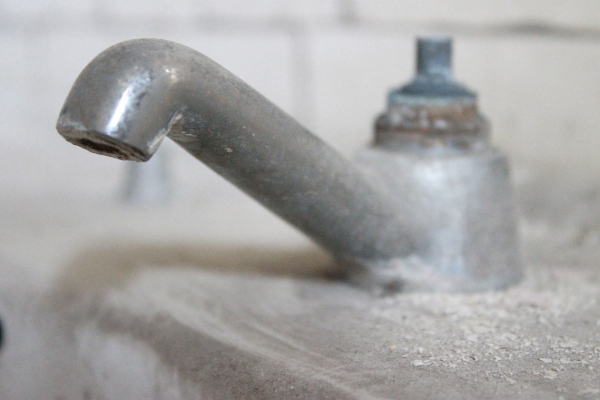Social Impacts of Drought
Drought becomes most apparent when it impacts our daily lives. The social impacts of drought in Canada are usually indirect. That is, they are a result of the direct impacts of drought such as low water levels in drinking water reservoirs, increased dust and lost economic output (e.g. crop loss).
Drought can affect human health
Drought can affect physical and mental human health. Increased dust levels may be detrimental to people with respiratory problems, and wildfires caused from the dryness may become a public safety issue. Farmers and those whose livelihoods are directly connected to land and water may have high stress levels or experience anxiety or depression.
Drought can affect our quality of life
Drought might also impact quality of life. For instance, the aesthetics of a community may change. Small bodies of water may dry up and plants might die. Drought can also affect recreation and there may be fewer recreation opportunities (e.g. water sports might be limited).
The 2022 United Nations “Drought in Numbers” [i] report notes that “Over 1.4 billion people were affected by drought in the period 2000 to 2019” (p.14) while also noting that, “second only to flooding, droughts inflict the greatest suffering on women and girls in developing countries, in terms of education, nutrition, health, sanitation, and safety.” [ii] Further, the World Bank’s 2021 report on migration [iii] suggests that some 216 million people may have to migrate by 2050 for reasons including water scarcity.
Drought can result in conflicts
Drought can also result in conflict. Water is an essential for human survival and so tension rises rapidly when people’s confidence in that supply is reduced. The preferred demand for water will likely remain the same during a drought, but because of reduced supply, some demands may not be met. For example, residents may be asked to reduce their domestic water use or to stop watering their lawns ([iv] See p.18-19). Industry may have their access to water reduced which can affect the economy and jobs which, in turn, can affect people’s well being. When there are restrictions on water supply, it is almost inevitable that there will be a conflict of some kind. Conflicts between water users may occur because some may feel that their needs are considered a lower priority than they should be. A 2023 assessment of potential water-related conflict in Africa forecast that 920 million people would be living in “very high to high conflict-risk basins by 2050”. [v]
Drought can worsen the risk of other disasters
2023 has been a record-breakingly bad year for wildfires in Canada [vi]. It has also been a bad year for drought in Canada with large parts of western Canada, where many of the year’s wildfires have occurred [vii], experiencing “D0 – Abnormally dry” or worse conditions [viii]. Given that fire risk tends to increase as things dry out, it intuitively makes sense that droughts worsen the risk of wildfires. However, it is a complicated relationship as drought can also reduce the amount of fuel (i.e. vegetation) available to burn [ix]. Given the links between drought and wildfire, the mass evacuations of Canadian cities in 2023 can be seen as being at least partially influenced by the drought conditions.
[i] United Nations Convention to Combat Desertification, 2022, Drought in Numbers 2022. https://www.unccd.int/resources/publications/drought-numbers. Accessed 2023-07-17.
[ii] United Nations News, 2022, World ‘at a crossroads’ as droughts increase nearly a third in a generation. https://news.un.org/en/story/2022/05/1118142. Accessed 2023-07-17.
[iii] The World Bank, 2021, Groundswell Part 2 : Acting on Internal Climate Migration. https://openknowledge.worldbank.org/bitstream/handle/10986/36248/Groundswell%20Part%20II.pdf. Accessed 2023-07-17.
[iv] Government of British Columbia, 2023. British Columbia Drought and Water Scarcity Response Plan. https://www2.gov.bc.ca/assets/gov/environment/air-land-water/water/drought-info/drought_response_plan_final.pdf. Accessed 2023-08-24.
[v] De Bruin, S., 2023, 920 million people could face conflict over the world’s rivers by 2050: what our study found in Africa. https://theconversation.com/920-million-people-could-face-conflict-over-the-worlds-rivers-by-2050-what-our-study-found-in-africa-207553. Accessed 2023-07-17.
[vi] Canadian Geographic, 2023. Mapping 100 years of forest fires in Canada. https://canadiangeographic.ca/articles/mapping-100-years-of-forest-fires-in-canada/. Accessed 2023-08-24.
[vii] Canadian Broadcasting Corporation, 2023, Canada’s wildfires: Where they are, how much has burned and how it’s changing air quality. https://www.cbc.ca/news/canada/canada-fires-map-air-quality-1.6871563. Accessed 2023-08-24.
[viii] Government of Canada, 2023. Canadian Drought Monitor: conditions as of July 31, 2023. https://agriculture.canada.ca/atlas/data_donnees/canadianDroughtMonitor/maps_cartes/monthlyAssessments/en/2023/cdm_2307_mn_en.pdf. Accessed 2023-08-24.
[ix] National Oceanic and Atmospheric Administration, n.d. National Integrated Drought Information System. https://www.drought.gov/sectors/wildfire-management. Accessed 2023-08-24.

